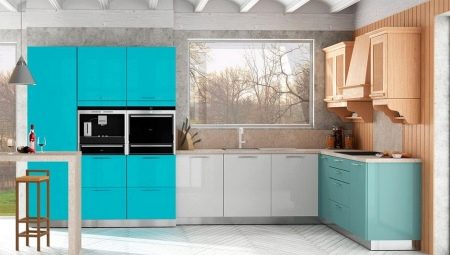Facades for the kitchen is a kind of showcase, which assesses the aesthetics of the kitchen interior. But the cabinet doors not only perform the role of external decoration, they still carry a practical load and must meet the expectations of the owners. Before choosing your finish option in the manufacturer’s catalog, you need to carefully study all the features, advantages and disadvantages of various materials.
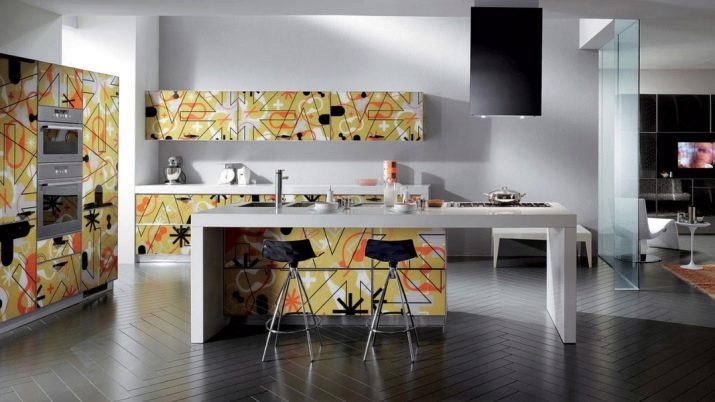
A detailed overview of the materials used in the manufacture of furniture will help to understand the features of kitchen furniture facades. In this article, we will also talk about the advantages of acrylic and glossy MDF facades for a headset, talk about whether to choose frame, aluminum, other types and which ones are more practical; whether the massif of a tree is actual in production of kitchen furniture today and what options should be preferred.
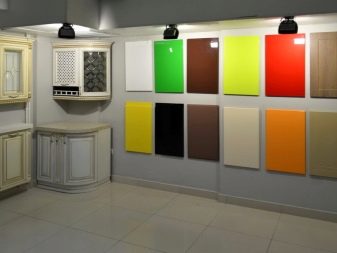

What it is?
Facades for the kitchen are prefabricated structures installed on the front surface of the cabinets. In the manufacture of a furniture set, its base - the cabinet structure - is made of heavy, massive plates capable of withstanding significant loads. In some cases, natural wood is used for this. Without facades, kitchen cabinets are simply open shelves and cabinets with a back wall.
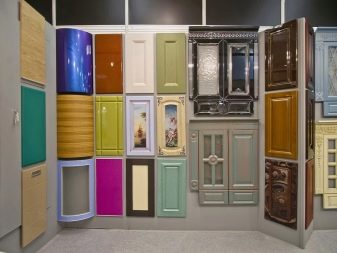

Most often, kitchen front panels are made in the form of swing doors, single or double, with different types of opening - folding up or down, with side opening. On the facade there may be additional inserts or decorative elements, accessories necessary for opening. Often it is complemented by a metal frame.
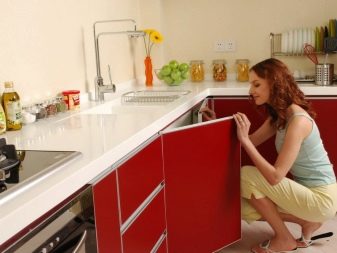
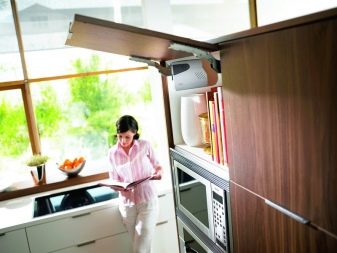
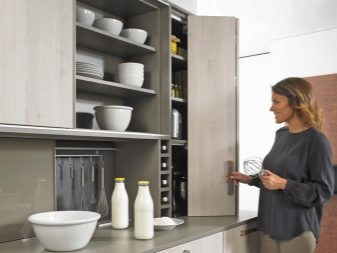
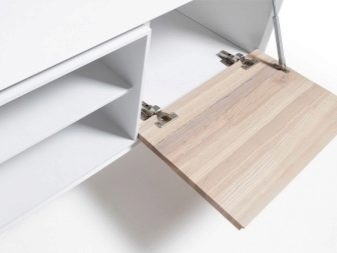
Kitchen facades always consist of a base - a plate of composites, wood shavings or solid wood and a decorative coating that protects the structure from external influences and determines the appearance. Most often, the outer panel is finished with film, plastic, veneer, special glass or metal. May also occur option with coloring the surface of the material.
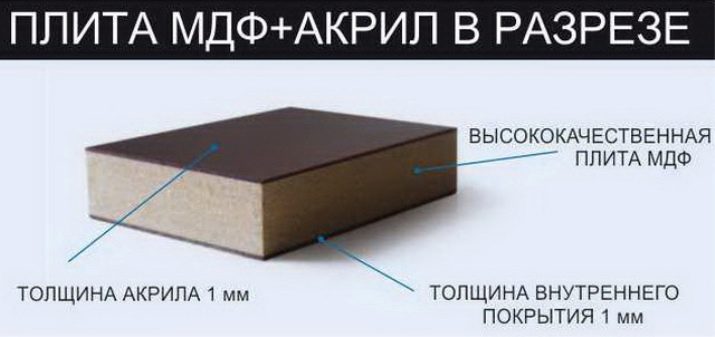
Requirements
Consider what are the requirements for kitchen facades. Among the most important points that must be taken into account by furniture manufacturers are the following.
- Moisture resistance. Not only is the ability to withstand direct contact with drops or splashes of water taken into account. The material must not deform under the influence of hot steam. If this requirement is not met, the product will lose its aesthetics quite quickly.
- Heat resistance. Facades for the kitchen should be resistant to heat, especially if there is a stove or oven nearby, other heat sources.
- Resistance to dyes. The smallest droplets of liquids flying, splashes of fruit and vegetable juice should not leave marks on the surface. Facades are best chosen on a finely porous basis so that they can withstand such pollution. Large pore materials, such as soft wood, require additional protection.
- Resistant to grease and oil. Some materials under the influence of such substances can dramatically change their appearance. This should be taken into account when selecting film facades - sometimes it is better to place them only in the top row of kitchen cabinets, and select more practical plastic or acrylic down.
- Hygiene safety. For kitchen facades, it is recommended to choose materials that are not susceptible to decay, mold. Otherwise, the beautiful front panels of cabinets can turn into a real source of bacteriological danger over time.
- Easy to clean. It is best to choose facades for the kitchen that do not require complex cleaning. It should be noted that pollution enters the matte surface faster, it is more difficult to maintain in order than glossy ones.
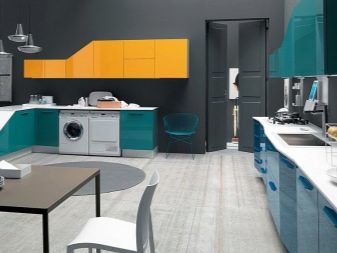
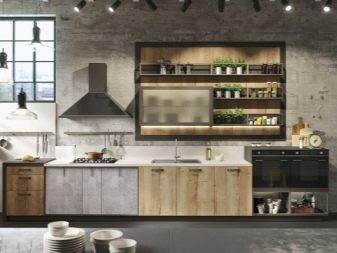
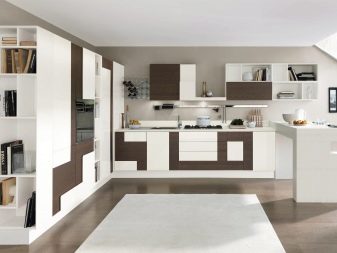
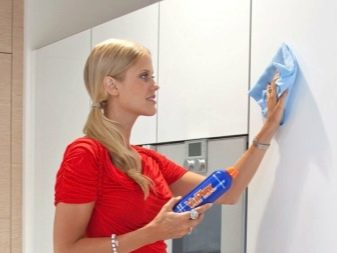
The list of requirements goes on. But even this set of criteria does not correspond to all popular materials for kitchen facades.
Kinds
All existing types of furniture facades for the kitchen can be divided into 2 categories - solid and frame or prefabricated, made up of several materials. In addition, there are sliding, louvre, bent types of structures. All of them deserve special attention and detailed study.

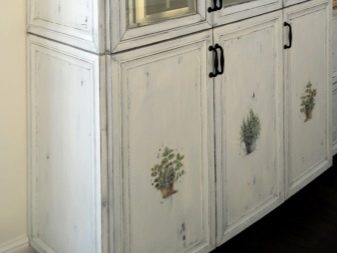
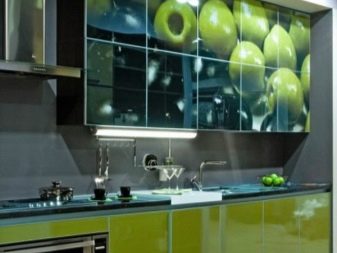
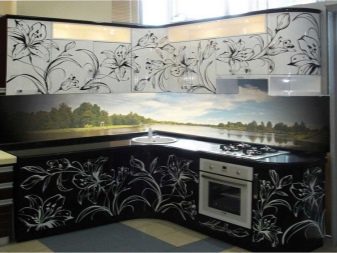
In frame
Frame-type kitchen facades are composite structures in which there is a prefabricated frame and an internal contrasting insert made of a material with a different texture, structure or degree of transparency. Sometimes such options are also called paneled, according to the method of assembly. The insert into the frame is called a panel. The base strips themselves are made of molded material - MDF or sawn wood.
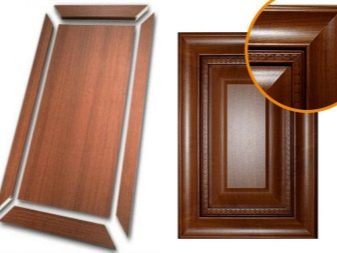

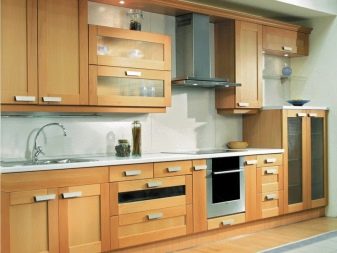
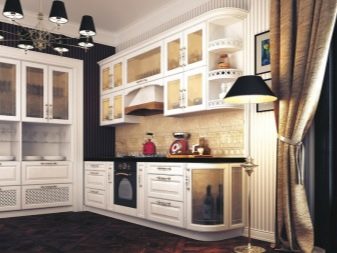
Also options with aluminum frames are popular - they are quite lightweight, durable, look presentable, go well with modern plastic, acrylic, glass inserts. As panels in ordinary MDF or wood facades, glass, metal, polymers are used, and options made of artificial stone can be used.
It should be noted that frame designs are not always made of different materials. Sometimes, contrasting color or texture inserts are simply used here.In general, such facades look interesting, so they are quite popular. But they are more difficult to care for, wear out faster and can undergo partial deformation.
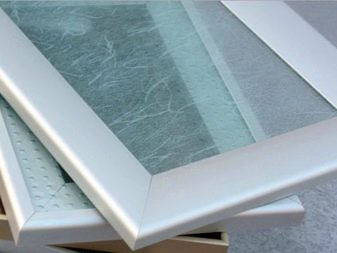


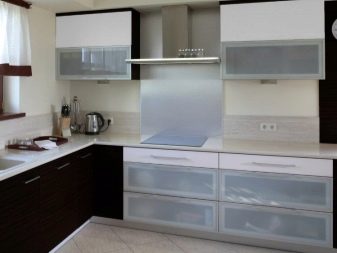
Whole
The panels are made of a solid plate or solid wood, do not have joints and inclusions. The most rare variant is solid wood products. In addition to the high cost, such products are heavy and create a serious load on other structural elements. Most often they can be seen in the premium segment of kitchens.
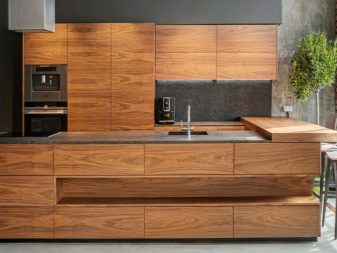
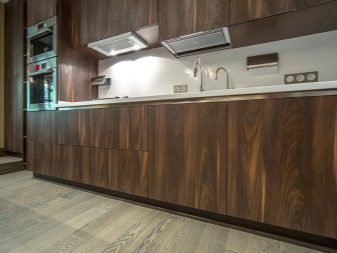
Solid wood panel facades - a simple and affordable kitchen solution. The coating for such products is a laminated film, plastic, natural wood veneer, enamel. Most often, chipboard or MDF is used to create such facade structures, but other plate materials with a sufficient degree of hardness, for example, moisture-proof plywood, are also found.
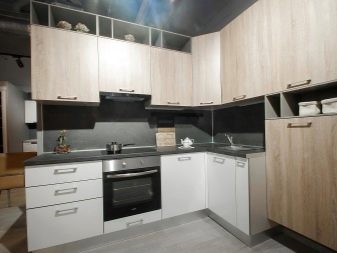
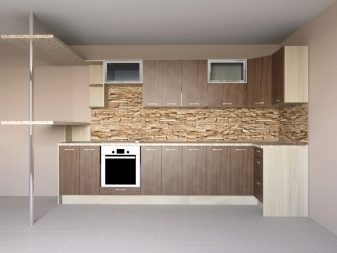
Radius or Bent
Such facades have a curved design, are made exclusively of MDF or multilayer plywood - thin wood veneer, connected in layers. Radius facades are made to order and usually fully correspond to the configuration of the kitchen. They can have glass or metal inserts, different bending intensities. Not only convex, but also concave options are available. This form can be as soon as the upper row of front panels, and all headset cabinets.
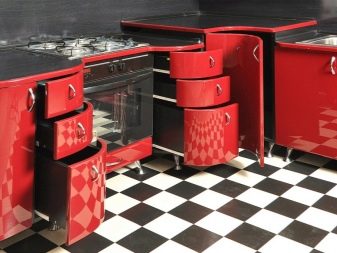
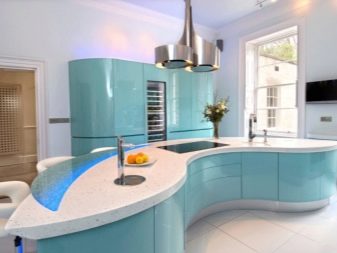
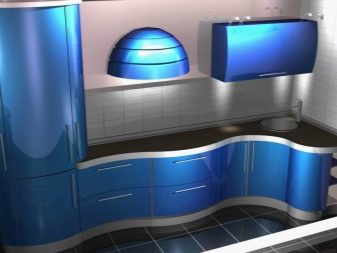
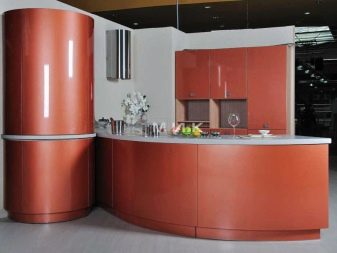
Sliding
They differ from all other facades in the way of fastening (on a special guide) and opening according to the type of compartment. The leaf moves to the side, while the second part of the cabinet remains closed. This solution is most often used in suspended modules, as in floor tables it is not too convenient. Sliding sashes give the necessary ergonomics in small kitchens, especially in combination with narrow, non-standard headsets.
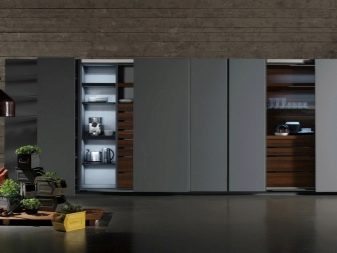
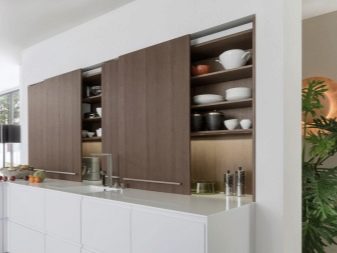
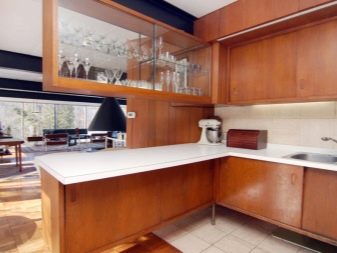
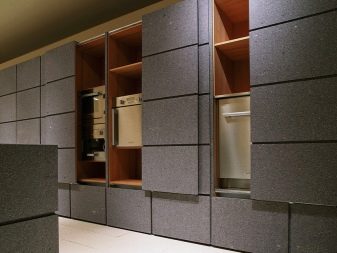
The facade material is selected among wood-based panels - it can be coated particleboard or MDF.
Louvres
A popular alternative to classic blind doors. Such facades have come into fashion with a trend for retro and eco-style, are made of solid wood or based on a frame structure and the planks horizontally located inside it. This effect of the blinds looks interesting and unusual.
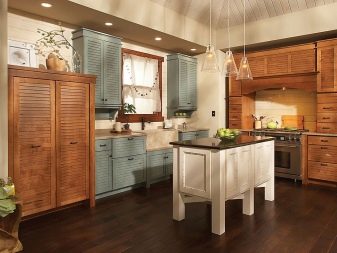

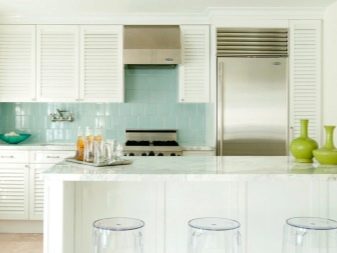
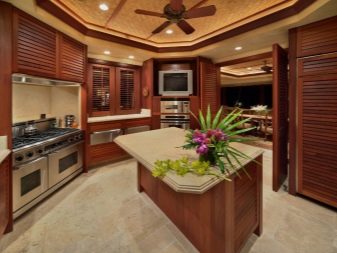
Dimensions
Kitchen facades from different materials differ in thickness, weight and other parameters. These data should be studied in advance in order to take into account the size and weight when choosing accessories, closers. The following width options are installed for swinging facades of kitchen furniture:
- 396 mm;
- 570 mm;
- 713 mm;
- 900 mm.
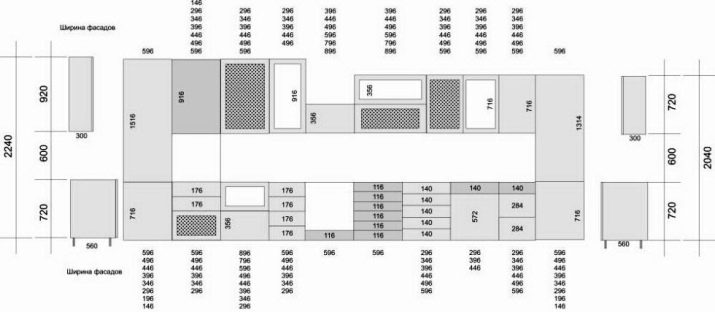
The length will be 296, 396, 446, 496 or 596 mm. Retractable modules are equipped with facades with a width of 140 or 283 mm, the height is the same as that of suspended ones. This applies to the standard size range; for constructions made according to individual drawings, the sizes can be almost any.

Thickness is also of great importance. It is she who determines what accessories will be installed on the facade. For example, board materials are usually standard. The thickness of MDF facades reaches 16-25 mm, but for chipboard it will be 16 or 18 mm, mortise handles cannot be mounted in this type of facade.
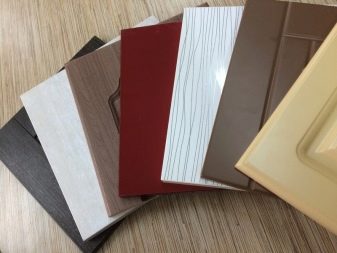
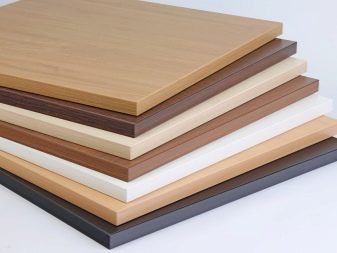
Materials and their comparison
The convenience of operating a kitchen set depends on the choice of the base material. Basically, the panels are made of plywood, solid wood, MDF, chipboard. Each option has its pros and cons. For example, wood allows you to create the most practical and durable, but heavy facades. MDF makes it possible to implement a variety of design ideas - almost all the unusual and decorative frame options are made of this plate.
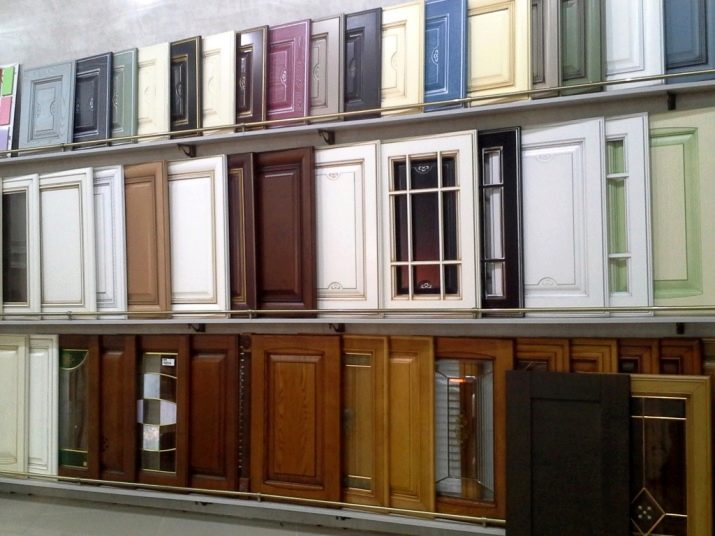
Particleboard is the most affordable option, but its large porosity creates high risks for swelling of the valves, their deformation.
MDF
The average density category of slabs is well suited for the manufacture of facades.The service life of such products reaches 15 years, there is no edge in the material, radial structures can be made from it. You can mill the surface, as well as produce frame facades in combination with different materials.
Exterior finish is also quite diverse - this is veneering, laminate cladding, staining, plastic coating. Laminated options can simulate almost any coating, the surface texture varies from glossy to matte and pearlescent.
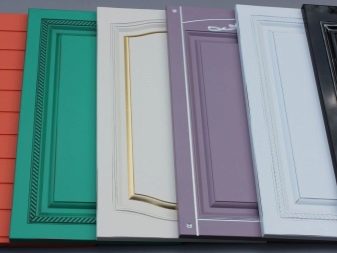
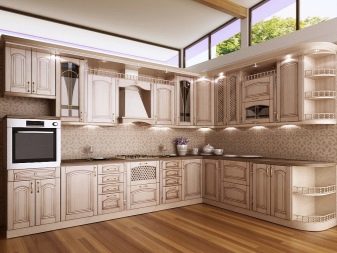

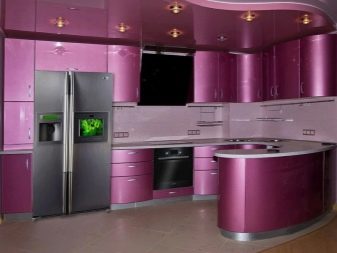
Among the advantages:
- the material is suitable for non-standard facades;
- amenable to restoration;
- differs in high durability.
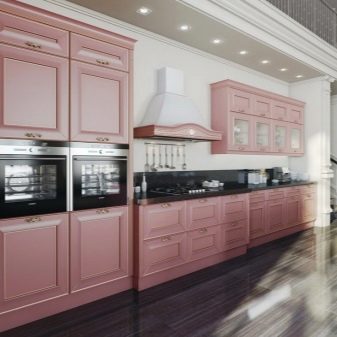

Of the minuses - the material is of artificial origin, with improper use it crashes faster than the estimated time.
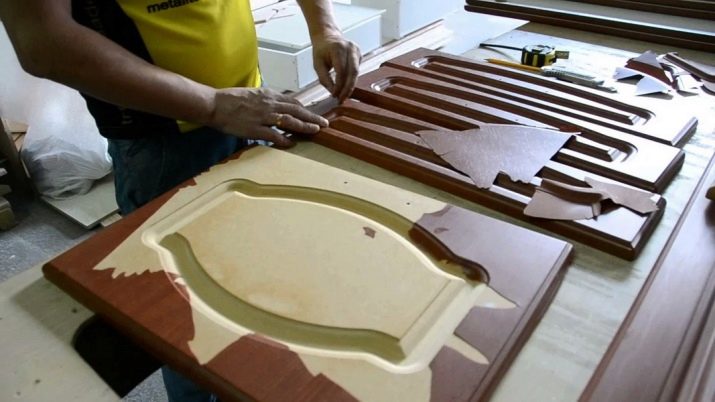
Laminated facades are much inferior to ultra-gloss plastic in decorative coatings. But the most effective in combination with MDF is enamel coating. - there are more than 300 color options, you can subject the surface to restoration, polishing.
It looks interesting in combination with MDF eco-membrane - an artificial material that allows you to maintain natural air exchange. Eco-veneer or fine line is chosen as a cover by lovers of the natural texture of wood.
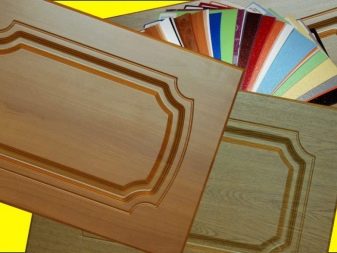
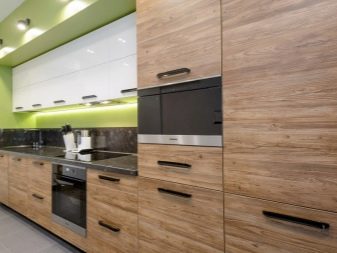
Natural veneer is the most effective, with the right choice of wood species you can get a completely unique finish of the facades.
The veneering of stone facades is done using thin plates cut from natural minerals or polyester resins; this decor looks very realistic. Moisture-resistant panels and amber inserts are made of epoxy resin. Ceramic facades based on MDF are also popular - this option belongs to the premium class, you can make mirror or matte coatings for stone, concrete, metal.
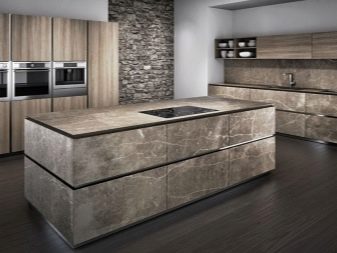
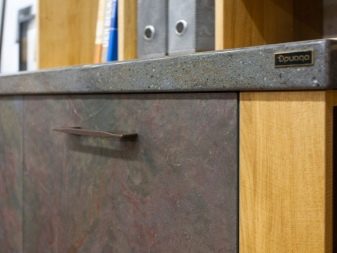

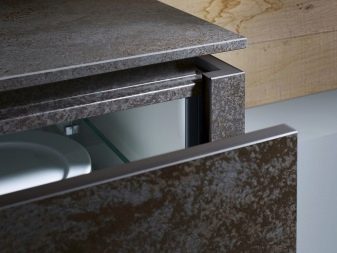
Combined options are made in different combinations. Milled facades with painting, stained-glass windows, panels in stone and leather are popular.
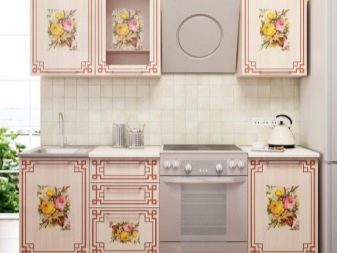

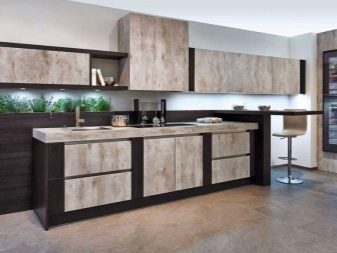
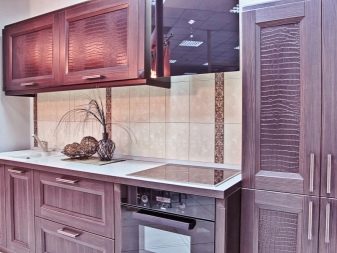
Chipboard
Such facades are characterized by low density - compressed wood chips simply do not provide the necessary strength and durability. To improve the quality characteristics of the material, constructions with a finish coating are made on its basis. Typically, chipboard facades are acrylic coated with a film or TSS-facing with different textures. The last option is the most expensive and effective, made of pressed craft paper, which allows you to simulate expensive leather or solid wood.
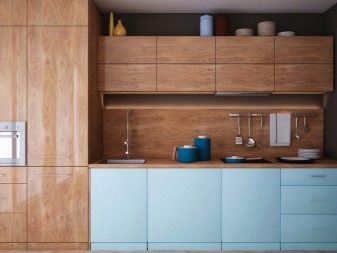
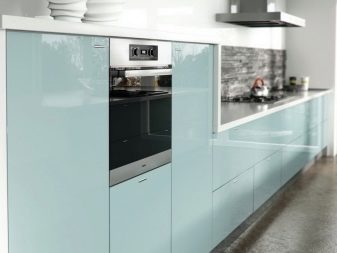
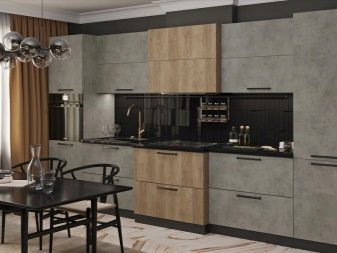
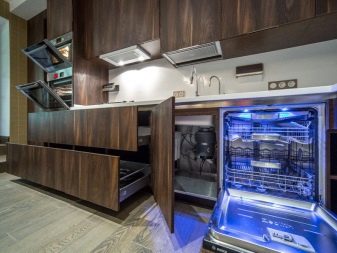
The acrylic coating is transparent, applied over the film or painted surface of the chipboard sheet. It cannot be restored, it does not tolerate shock loads. Film is the cheapest option for finishing the facade, it does not give high-quality glossy gloss, but can have almost any pattern.
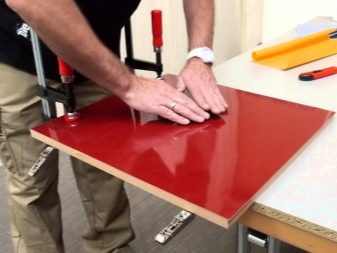

The advantages of this choice are obvious:
- low price;
- wide availability;
- the ability to select textures for linen, matting, wood, concrete, metal, stone.
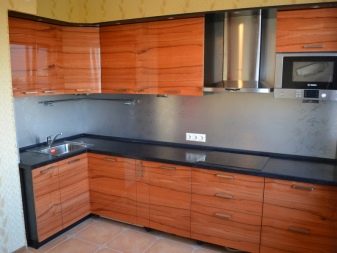
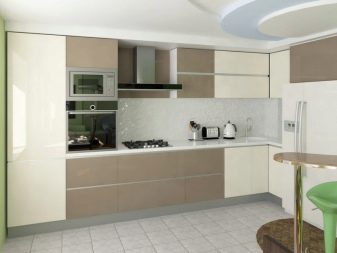
There are minuses too - it is impossible to make a radiused facade; the environmental friendliness and wear resistance are the lowest. Such designs always have an edge that makes the appearance cheaper, but you can use an aluminum profile that corrects the situation somewhat.
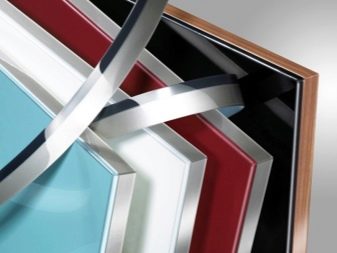

Array
Facades from the massif are made both in the whole version, and in the form of frames with inserts from veneered MDF. Mostly hard and valuable wood species are used - cherries, oak, beech, ash. Birch facades are impractical because crack at temperature extremes. Pine and other conifers are soft, absorb moisture more easily, but better amenable to processing.
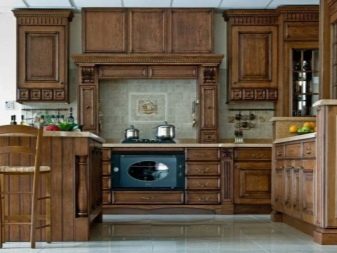
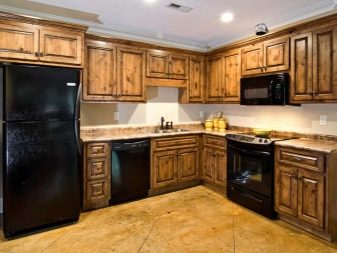
Among the obvious advantages of the array:
- long service life - from 25 years;
- can be textured - brush, patinate, stain;
- completely eco-friendly, natural material.
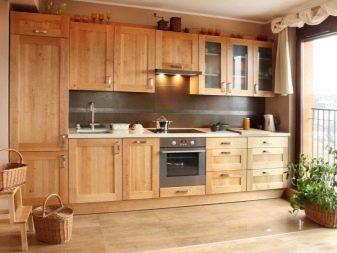
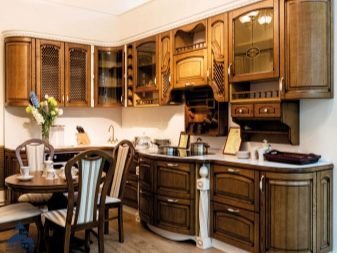
The disadvantages include the high cost of solid facade, the weight and the susceptibility of the tree to a change in geometric parameters.
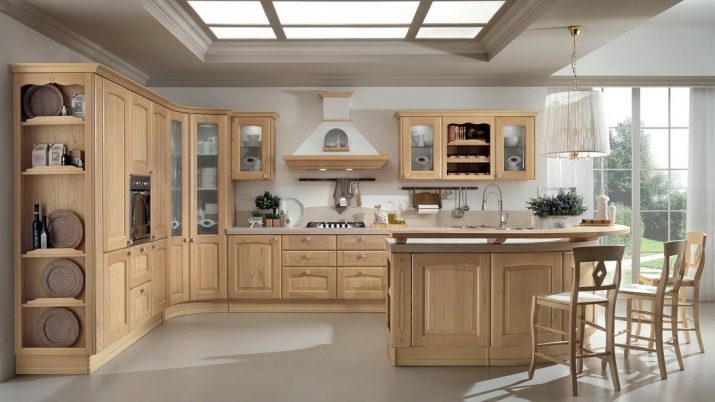
Combination of textures
Frame kitchen facades allow you to effectively combine different textures of materials. Among the most interesting combinations are the following.
- Leather and wood. Framing from solid wood or veneered MDF boards harmoniously combines with textured decorative insert. You can use a reptile skin pattern or get along with a classic imitation of dressed bovine skin. The frame is made of glossy lacquered or matte wood.

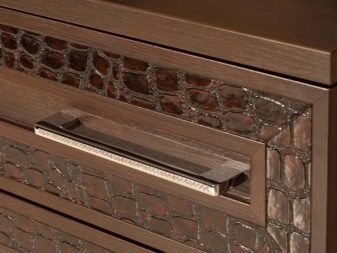
- Gloss and wood. The veneered insert blends well with a simple enamelled facade. This technique makes the interior less boring and flat, gives it volume and liveliness. To enhance the effect, you can insert a glossy decorative panel into the frame from the brushed array.
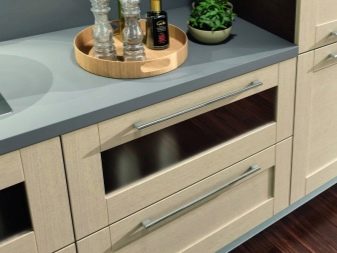
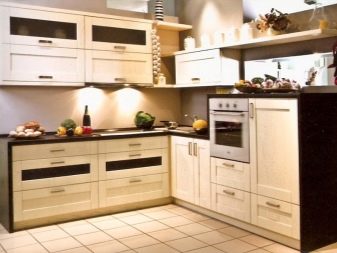
- Relief and gloss. The facade with 3D milling looks stylish neutral monophonic framing with a plastic coating or film. Milled inserts are also best done in monochrome or two-tone.

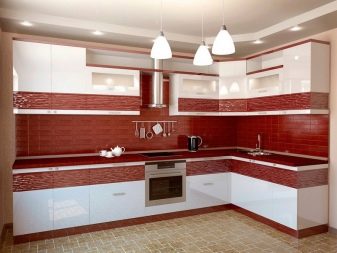
- Stone and wood. The combination of natural textures looks good in the interior. Most often combine solid facade for the lower row and ceramic panels on hanging cabinets.
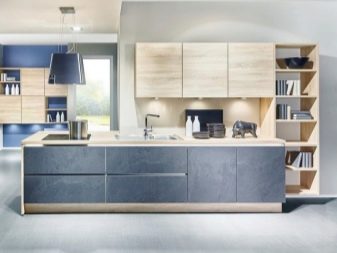
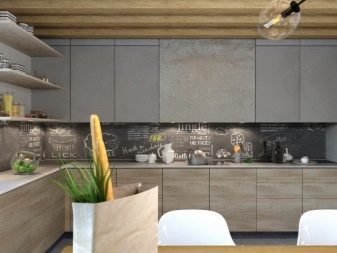
- Metal or glass combined with wood. This combination of textures allows you to more clearly show the pattern of wood or veneer, emphasizes the expressiveness of the design decision.
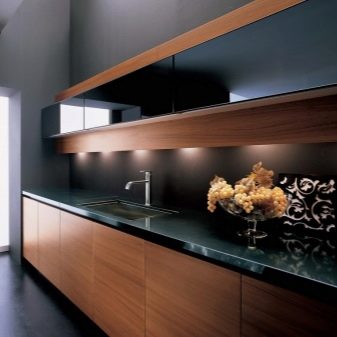

- Gloss and dullness. Different combinations of texture can be used to emphasize the versatility of the design or the complexity of milling the facade.

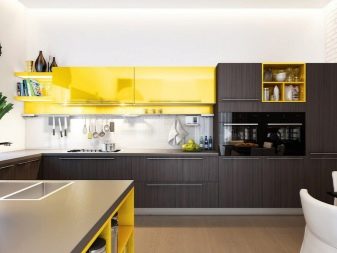
Colors and their combination
The colors must also be combined correctly. Traditionally, for the facades of small-sized kitchens, light shades are chosen - white, beige, cream, ivory. They can be combined with more stringent black, gray, dark chocolate. If you want to combine more than 2 colors, you must follow the rule: a neutral background occupies 60% of the facade area, 30% is given to an additional tone, and 10% falls on accents - ornaments, murals or inserts of bright colors.
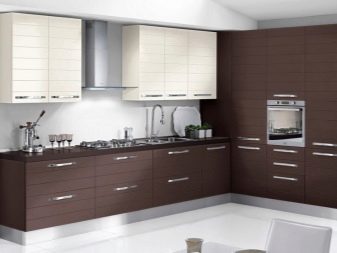

In style kitchens modern color facades are allowed. It is dominated by bright red, juicy green, orange, yellow tones. In addition to them, neutral white or gray is chosen, as well as shades of a tone darker or lighter than the base.
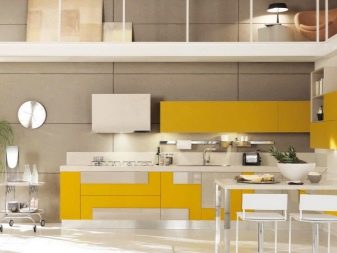

Herbaceous, olive shades go well with brown tones. It can be baked milk, cappuccino, earthy or chocolate tone. Blue and cyan colors require support in the form of white, gray. Lavender, cherry, wine tones can be combined with a noble monochrome range.
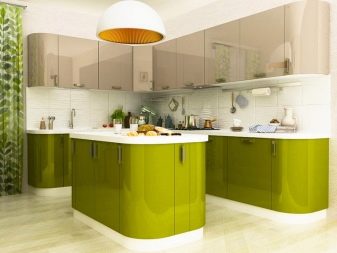

Shades of natural wood are best combined with other natural tones. Green, beige, gray and yellow can emphasize the rich texture of the material.
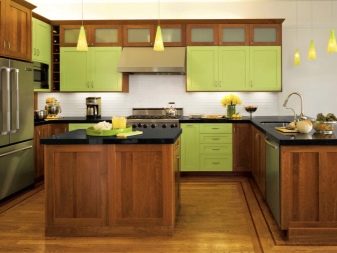
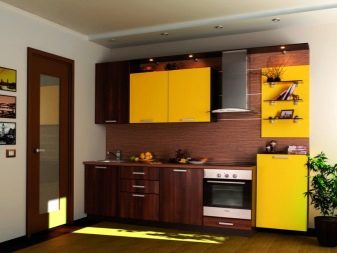
Black facades can be diluted with shades of metallic. To get a domino effect, just add contrasting white accents. Gold decor elements with black front panels are installed in the kitchens, made in the Baroque and Art Deco styles.
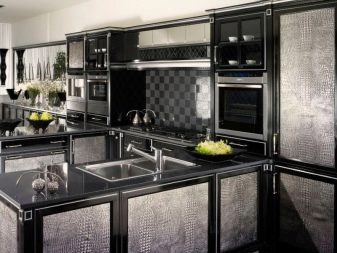
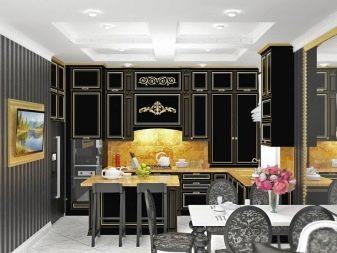
Design and styles
In order for the kitchen facade to blend harmoniously with the overall style of the interior, when choosing its design, you should adhere to certain rules.
- Glossy finish Suitable for modern styles. Modern, hi-tech, minimalism - everywhere you can use coatings with a mirror shine.

- Mother of Pearl Coatings well support the classic motifs in the design. It can be neoclassic, baroque, art deco.
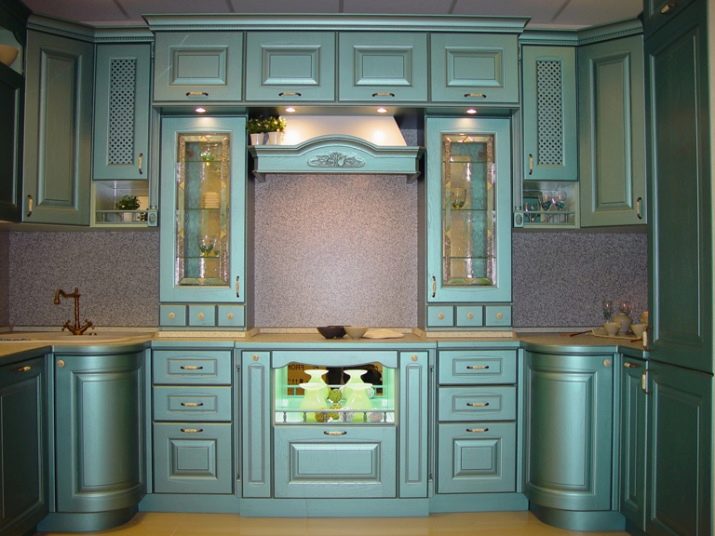
- Matte Textures harmoniously fit into the style of shaker, loft, minimalism. Ceramic coatings imitating stone facades, concrete, plaster, and rusted metal look interesting here.
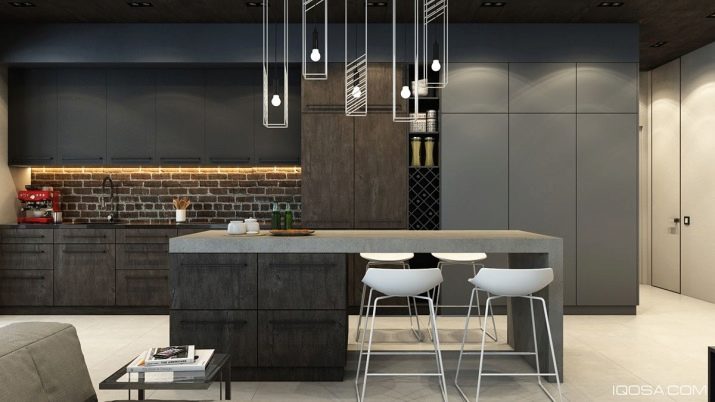
- Enamelled facades go well with neoclassical, provence style. They can be used in bright avant-garde or kitsch cuisine.


- American country style and its sister shabby chic, Scandinavian and eco style require wood trim. The natural texture of the facade can be natural (in the array) or created using veneers.
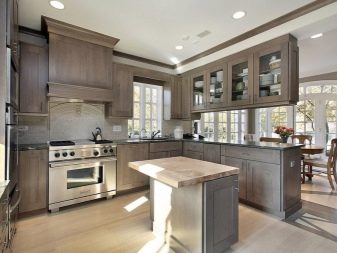
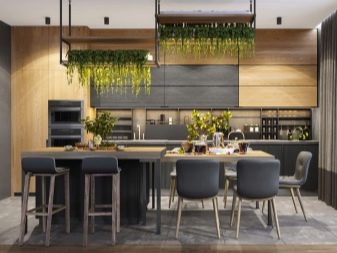
- Paneled, carved decors - an integral attribute of classic interiors. Chamfers on the facade are appropriate in classic kitchens, Rococo, Baroque styles. Patina, decorative painting are well combined with frame facades.
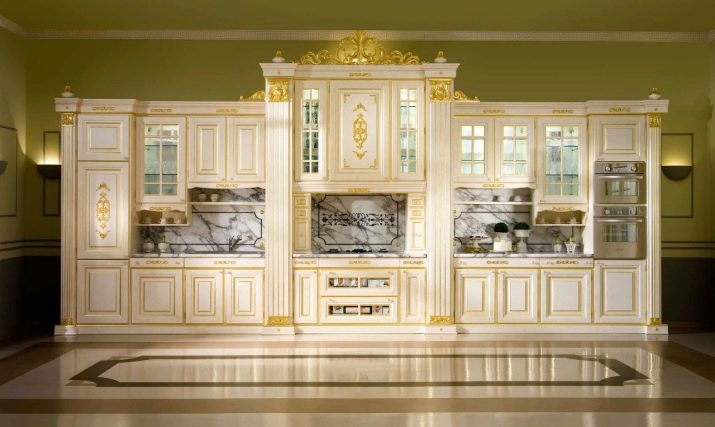
It is necessary to take into account the style of the headset and the entire room when choosing the facade, then the result will delight the owners of the house or apartment for a long time.
Milling Examples
Embossed facades made of MDF or solid wood are very popular in classic interior styles, neoclassical design directions. To get the desired decorative effect, it is enough to correctly milling the surface. These works are performed on modern CNC machines. There are various options for milling:
- rectilinear, in the form of single and parallel strips;
- frame along all edges;
- complex double - curly, running in parallel;
- original with patination;
- baguette repeating the picture;
- 3D - creating volumetric effects, waves, grids, rhombuses.
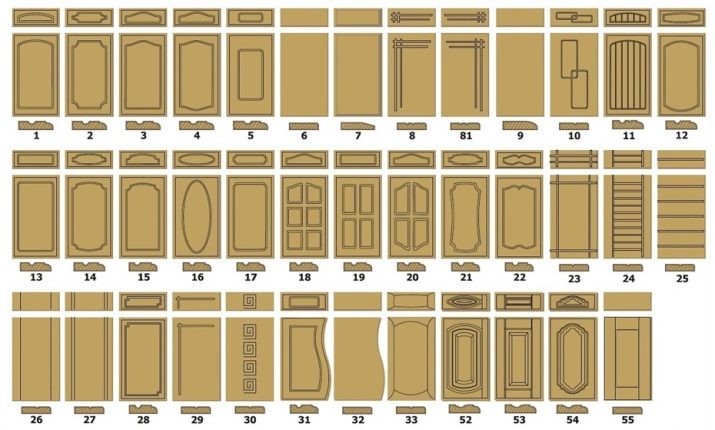
These are the most popular options. Also, according to an individual sketch, almost any ornament can be brought to life.
Interesting ideas
Original and unusual ideas for decorating kitchen facades are at the peak of popularity today. It can be a fashionable shaker style - with solid facades painted or covered with vinyl in monochrome.
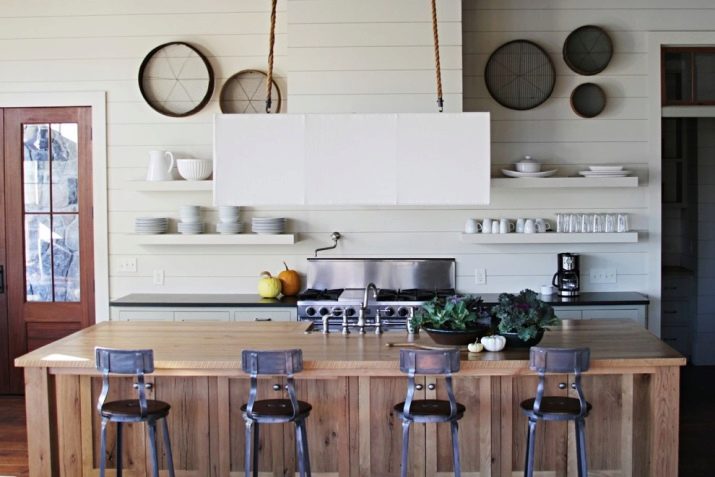
If you want originality in decoration, it’s suitable ceramic kitchen - such facades look unbanal, have an original texture. Especially stylish is porcelain stoneware under rust, it is now recommended by the best designers in the world.
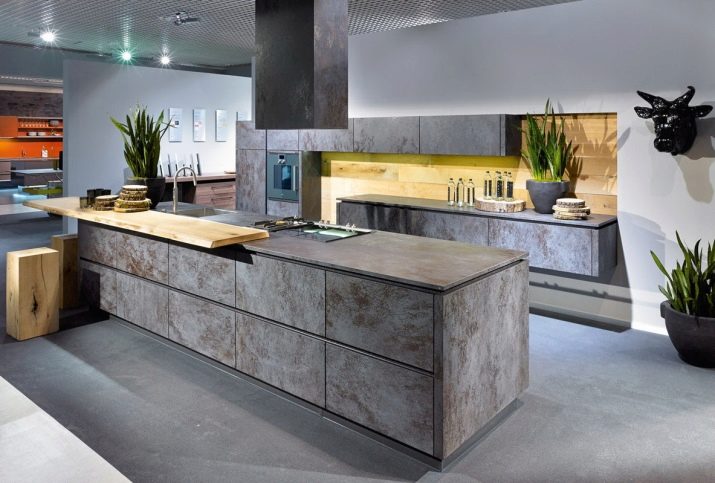
A practical kitchen with a facade made of MDF and Soft Touch coating is ideal for a strict minimalist atmosphere of a house or apartment. The enamel on the basis of rubber varnish forms a deep matte texture without glare, velvety to the touch. On such a coating spots, fingerprints will not be visible, but it looks very impressive.
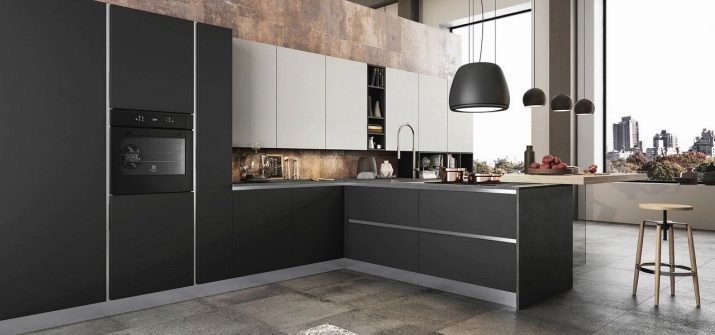
Manufacturers Overview
There are a lot of companies engaged in the production of high-quality kitchen facades in Russia and in foreign countries. Among the popular brands are the following companies that have earned the trust of consumers.
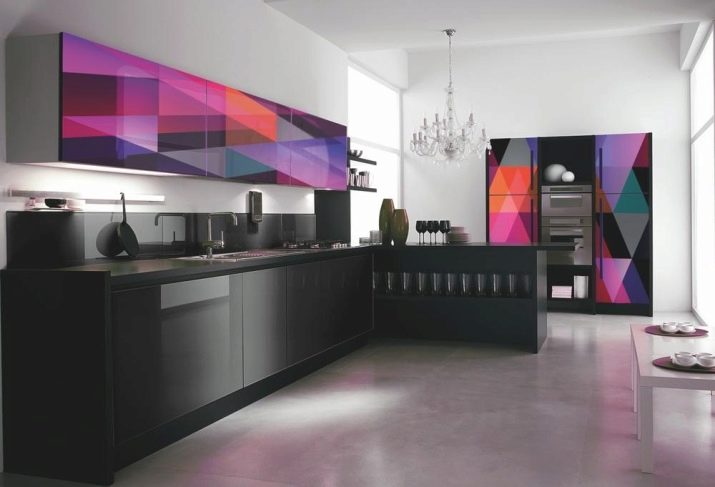
Egger
European manufacturer, famous for its textured boards from MDF and chipboard. The brand produces a wide range of coating options - from smooth glossy and matte to imitations of textured natural stone and metal. There are also collections in the collections that imitate natural wood. The company is popular in Russia, its products are affordable, environmentally friendly, meets European standards.
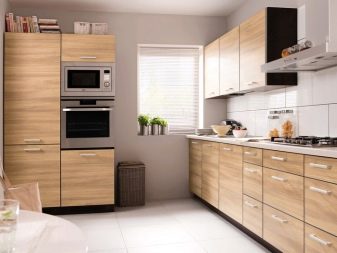
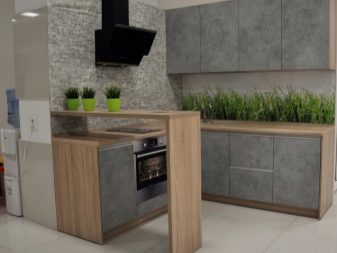
Acrylite
Acrylite brand Italian glossy facades appeared on the Russian market in 2015 and immediately gained popularity. The manufacturer offers ready-made acrylic panels in factory packaging for delivery, in the presence of 24 various options for decorative solutions. The glossiness of the facades reaches 100 gloss, while the brand manages to maintain realistic color rendering and protect the coating from fading under the influence of ultraviolet light.
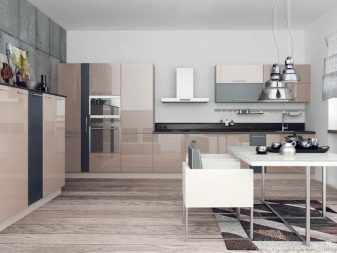
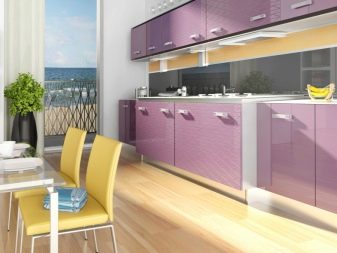
Favor
Russian manufacturer specializing in the manufacture of solid wood products. Among the species used are oak, birch, including tinted and patinated. The Neoclassical collection features facades from veneered MDF. The design of the products is traditional, with chamfers, frames, patch elements.
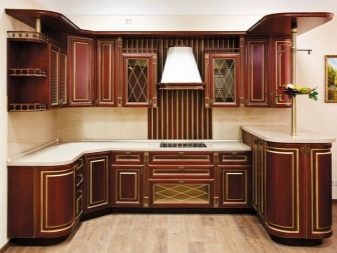
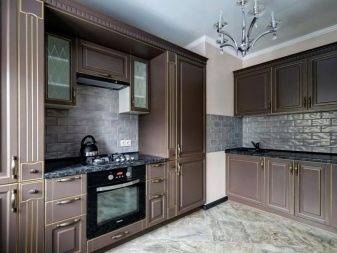
AGT
Turkish manufacturer supplying MDF film facades to Russia. Reasonable pricing, a wide range of sizes and design solutions have made this brand one of the most popular on the market. AGT facades are often chosen as an alternative to more expensive acrylic resins. High-gloss coating looks spectacular, protected from UV rays.
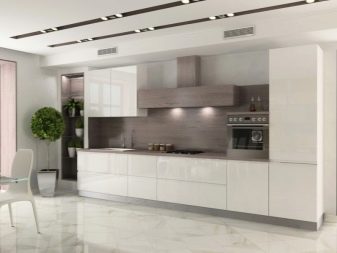
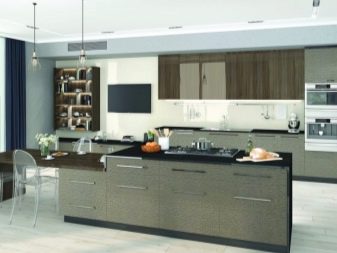
Ready-made panels are not afraid of contact with steam, a humid environment, and lend themselves well to cleaning.
Russta
An Italian factory specializing in creating facades for premium kitchens. An array of natural wood is used as the basis - oak, birch, linden, acacia, ash. There are veneered options, with a more noble decorative coating.
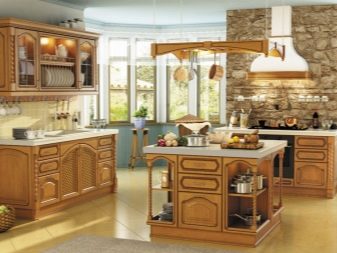

Senosan
Austrian manufacturer of acrylic facades. The brand specializes in high-gloss coatings for MDF and particleboard, the finished coating is highly resistant to mechanical damage, safe, does not emit harmful substances when heated. In addition, the Senosan arsenal has acrylic glass that can replace the classic glass facades and add even more style and luxury to the kitchen set.
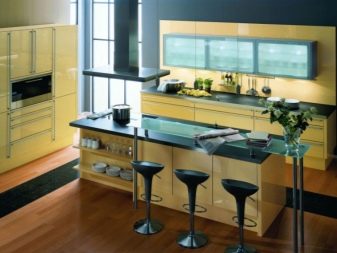
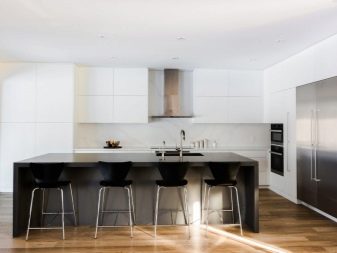
"CALL"
The Belarusian factory produces a wide range of kitchen facades from solid wood. The main material is oak, which gives special solidity to the decorative design of the headset. Arrays of alder and cherry are used to create facades in natural brown colors. The factory makes budget options from pine - soft wood.
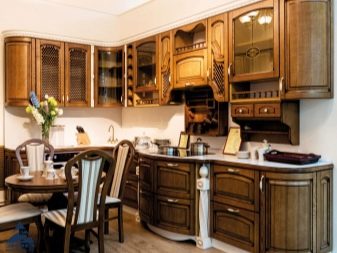

Proxima
The Italian brand offers immediately 3 collections of facades for the kitchen from solid wood - Primavera, Alta, Ingresso, made of hard rocks: ash, alder, cherries. In the lines there are not only classic, but also design solutions - patinated, made in decapitate technique. Budget solutions are presented by the Modena collections in brushed pine and Largo in high-gloss chipboard.
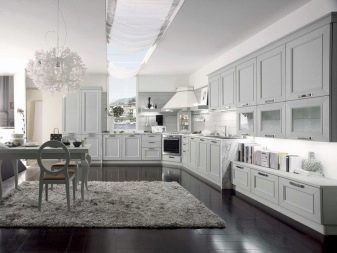
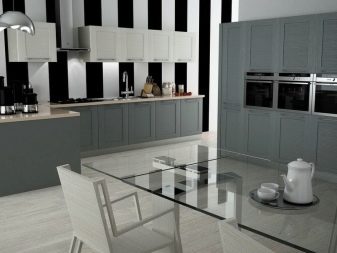
TSS Cleaf
Italian manufacturer of thermally structured facades. The fundamentals are created by pressing layered polymers onto boards with wood composition (MDF, chipboard). The finished coating reliably recreates the structural surface of natural wood with its pores, cuts. The collections have coatings imitating textiles, as well as other materials, including three-dimensional three-dimensional facade solutions.

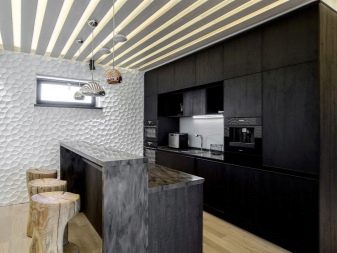
Adelkreis
Domestic manufacturer creating acrylic furniture facades for kitchen furniture. Multi-layer combined solutions differ high moisture resistance, not afraid of contact with steam or direct sunlight.
Ready-made facades are much cheaper than those of foreign competitors.
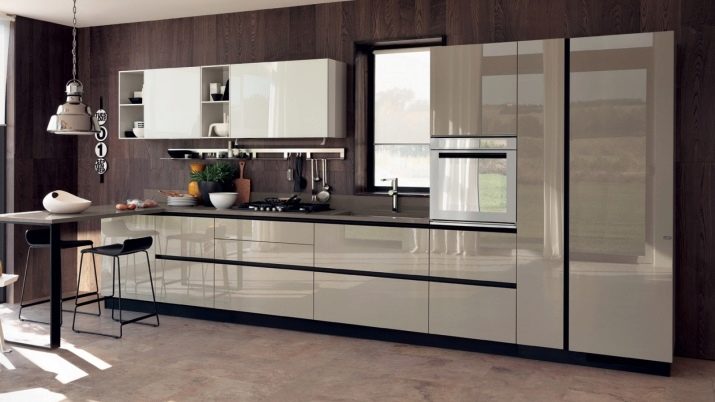
How to choose?
When deciding in favor of a specific type of kitchen fronts, it is important to understand that it is better to focus not only on the external design. The most durable and practical products from the array are much inferior in decorativeness to their counterparts with a film or acrylic coating. To make the right decision, you should rely on the following criteria.
- Product quality. Facades of European manufacturers are manufactured to more stringent standards and generally better tolerate any external influences. The choice should be made in favor of Italian, German, Austrian brands. Domestic manufacturers have proven themselves in the production of facades from solid wood.
- Compliance with the style of the interior. In an ultramodern kitchen, the front panels of metal cabinets and high-gloss plastic will look good. In the traditional - an array, veneer, frame and louvered facades. Enamelled options or veneered solutions are suitable for country kitchens.
- Budget. Low-cost facades from MDF and particleboard with film coating and plastic are designed for the mass consumer. A frame design combining 2 colors or different materials will help diversify the design. If you plan to change the headset in 5-10 years or want to further update the decor, this option will be optimal. For cabinets, it will be enough to order new facades in a different color. The country house is usually ordered more expensive facades from the array, able to maintain their attractiveness for decades.
- Glossy or matte finish. Typically, coatings with high reflective properties are chosen to visually add space to the interior.Matte options look more noble and restrained, are in demand in the design of large areas.
- Practicality. The easier the material is to take care of, the longer the kitchen facades will retain their external appeal. Enamel coatings and plastic are the easiest to clean. The film is the most capricious, with frequent contact with detergents it can peel off.
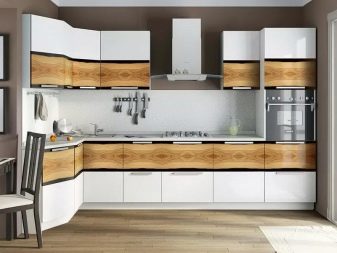
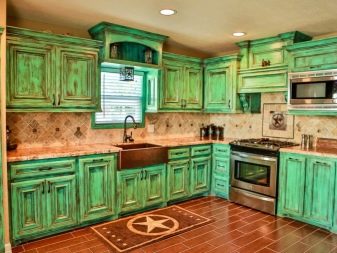
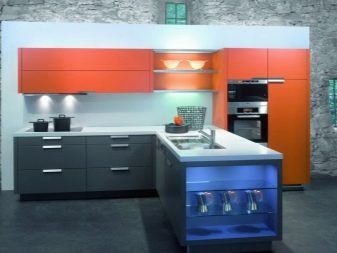
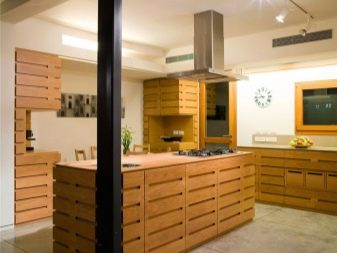
Based on these criteria, you can make a choice and purchase facades for an existing or new kitchen.
How to care?
Care of kitchen facades is an important component of maintaining perfect order in the entire premises. In fact, both matte and glossy facades need to be regularly cleaned of dirt, dust, but this must be done using an individual approach. What tools can be used, what should be avoided in cleaning surfaces, what to consider when there are different materials in the finish - general recommendations will be discussed below.
- Furniture made of chipboard can not be cleaned with alkaline, acid, alcohol and chlorine-containing materials. This is especially true for color options that can fade. The best option is to clean it with a soft cloth and soapy water. It is better to remove any contaminants immediately before they are absorbed into the surface.
It is unacceptable to use hard abrasive materials to remove stains and dirt, moisture from the surface must be wiped after it gets on the facade, otherwise the material may swell.
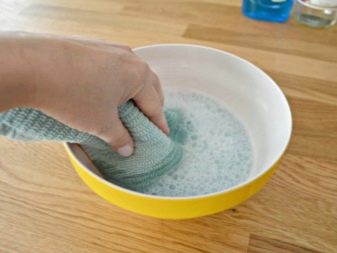

- MDF film facades are recommended to be cleaned of contaminants using plastic care products, but it is better to avoid very aggressive chemicals and hard brushes. Color films cannot be treated with chlorine and alcohol solutions - spots may remain on the surface. A wet facade should immediately be wiped with a soft dry cloth, otherwise the coating may peel off under the influence of moisture.
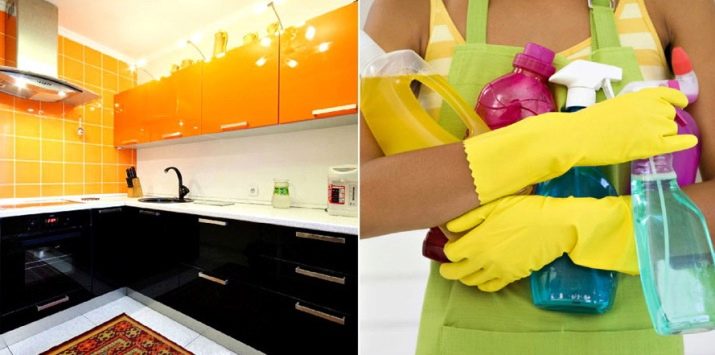
- Glossy coatings are not recommended to be exposed to any impact in the first 30 days after installation and removal of the film.. In the future, care with liquid degreasing agents for dishes or glass spray sprays and soft cloths is possible. After cleaning, the surface is covered with a wax polish - it will reduce the rate of accumulation of dust and dirt on the surface.
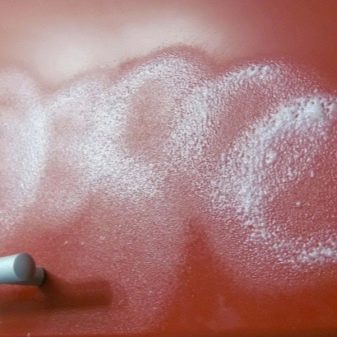
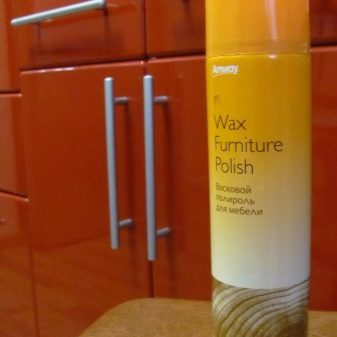
- Plastic coated MDF facades tolerate cleaning with liquid washing gels and sprays that do not contain hard abrasive particles. Do not use alcohol-containing and chlorine bleaches to remove stains, banned wax polishes. Instead, you need to buy protective equipment for plastic.
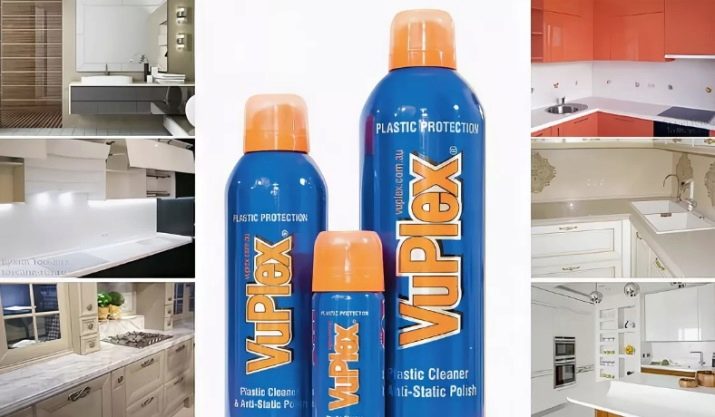
- Facades of kitchen cabinets made of solid wood allow the use of exclusively chemically neutral care products. Compositions based on silicone will accelerate the aging process of wood, it is better to abandon them. You can remove dust with a soft cloth, increase the gloss of facades, and wax polishes will help to hide minor damage. So that the tree does not change color, it is better to abandon the use of chlorine-containing or acidic cleaners.
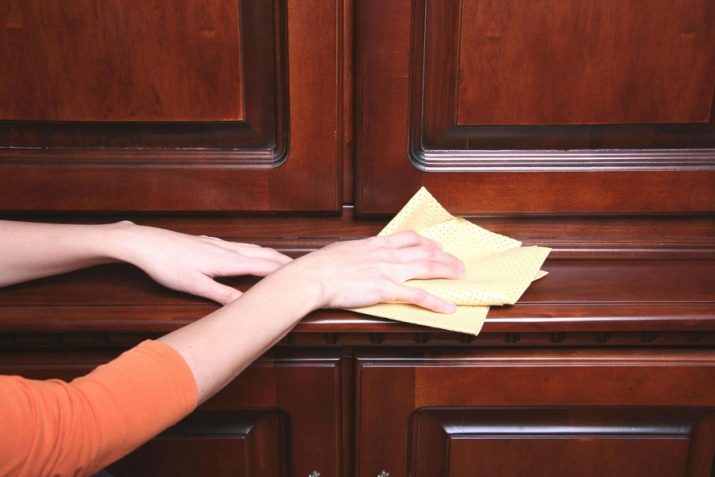
Proper care is the key to a long preservation of the beauty and functionality of kitchen furniture facades. Observing the simple rules, you can make it so that after decades, headsets will look great.
See how to choose the right material for the kitchen facade in the next video.
